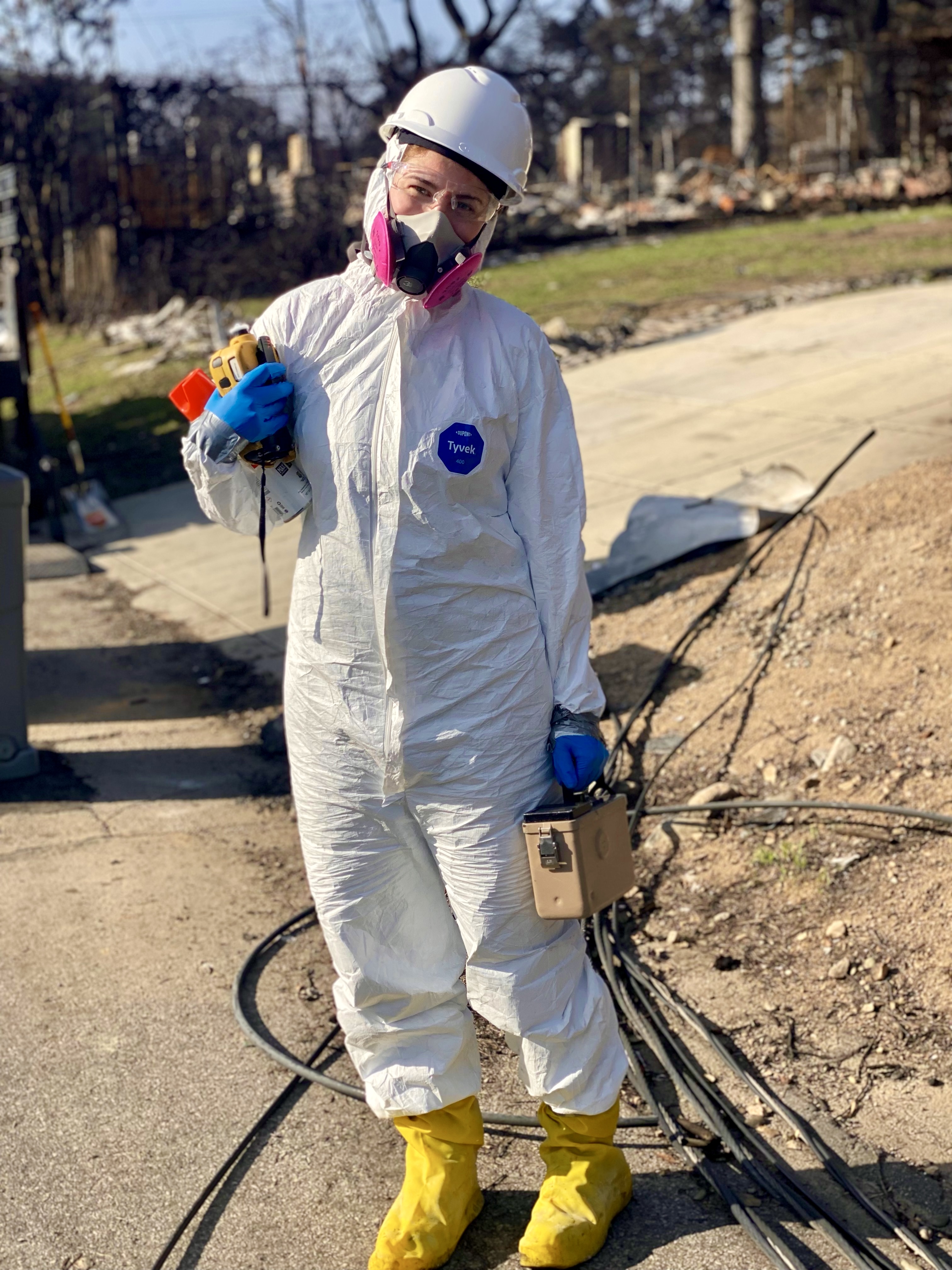Hannah Medsker at Saddle Peak overlooking Carbon Canyon in Calabasas, Ca. during a supply run in the Palisades mountains. (Submitted by Hannah Medsker)
Published May 16, 2025 under Alumni Stories
In January, a pair of wildfires consumed the Eaton and Palisades areas of Los Angeles County in California, stripping a once-idyllic landscape filled with lush vegetation almost bare. But as officials ordered more than 100,000 residents to evacuate, Hannah Medsker was among those called to go in.
Medsker, a 2024 graduate of the Duke Master of Science in Global Health program, is an environmental scientist in the emergency response and disaster recovery division of Consolidated Safety Services (CSS), a company based out of Fairfax, Va. that contracted with the U.S. Environmental Protection Agency to assist with recovery efforts after the wildfires. She was among more than 1,000 people engaged in efforts to remove hazardous materials from areas damaged by the fires, part of the largest wildfire hazardous waste cleanup since the EPA was founded in 1970, according to officials.
“This is the first disaster I’ve ever worked on,” says Medsker, who works in CSS's Durham/RTP office. “I got there Jan. 29,” two days before the fires were fully contained.
When clean-up efforts began, Medsker started most days at 5:30 a.m., donning a hazmat suit, a respirator, steel-shanked boots, cut-resistant gloves and a hard hat. She secured the suit’s openings at the wrists and ankles with layers of duct tape to prevent contact with hazardous materials. Her team worked 15 hours a day clearing materials such as paint, pesticides and lithium batteries from parcels of land, sorting through the personal belongings of residents whose homes were destroyed.
“I saw the fire on the news,” Medsker says. “But when I arrived, I saw the fragments of home décor, mementos sticking out of piles of ash and burnt avocados and oranges on the ground. It was surreal.”
The Los Angeles fires killed an estimated 30 people, according to the California Department of Forestry & Fire Protection. But the impacts of a wildfire on environmental and human health can extend for years after a disaster. Globally, wildfires cause more than 340,000 premature deaths from cardiovascular and respiratory issues, the United Nations reported. Those threats are expected to grow as climate change fuels more frequent, intense fires.

Medsker, who at DGHI studied the effects of toxic chemicals such as PFAS on reproductive health, says people may not realize the effort it takes to restore a landscape damaged by fire into a safe, healthy place to live.
“All the hazardous material needs to be identified and properly disposed of,” says Medsker, who was deployed to the recovery effort for more than a month, “All the debris needs to be removed, and utilities need to be restored. The air, water and soil need to be assessed and remediated.”
In the Los Angeles recovery, those efforts relied on a broad range of experts, from electricians who secured downed power lines to ordinance technicians who removed firearms and ammunition. Even arborists are essential to ensuring a neighborhood is habitable, Medsker says.
“No one thinks about how life-saving arborists are after a wildfire,” she says. “They go through every tree and identify which ones are a threat to safety.”
As disaster recovery efforts continued, residents sometimes walked through the site to search for family heirlooms and valuables. Medsker recalls one resident standing in front of an empty lot as she worked nearby.
“He stared silently at his destroyed home for 20 minutes,” she recalls. “Then, he threw poppy seeds all over the area, telling me the flower is a symbol of hope.”

